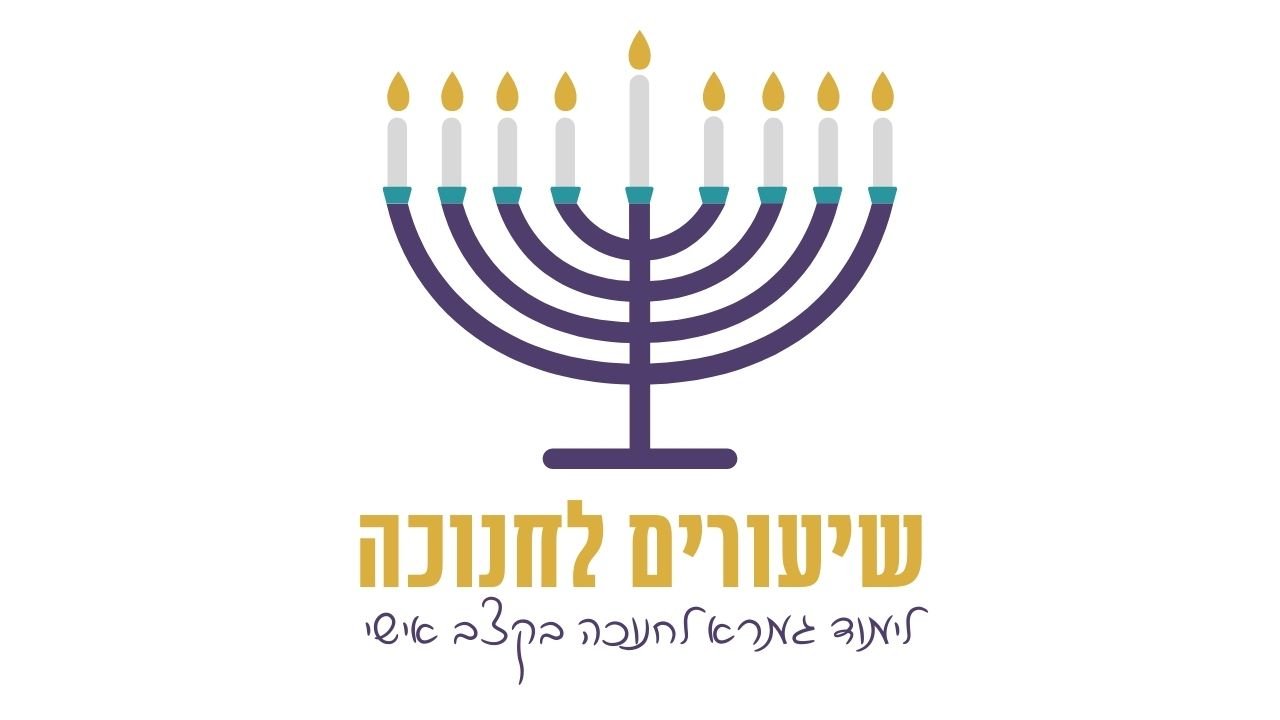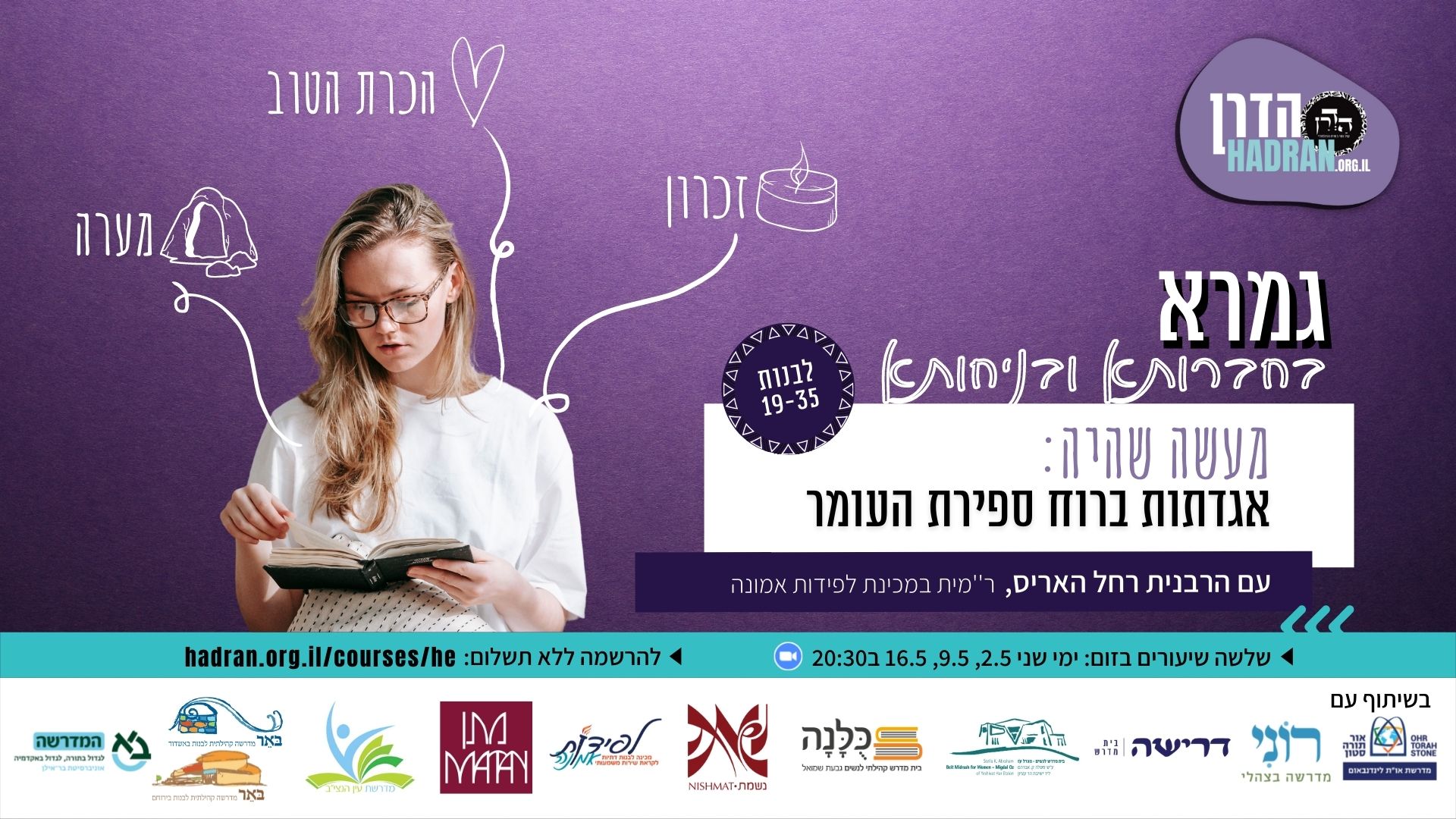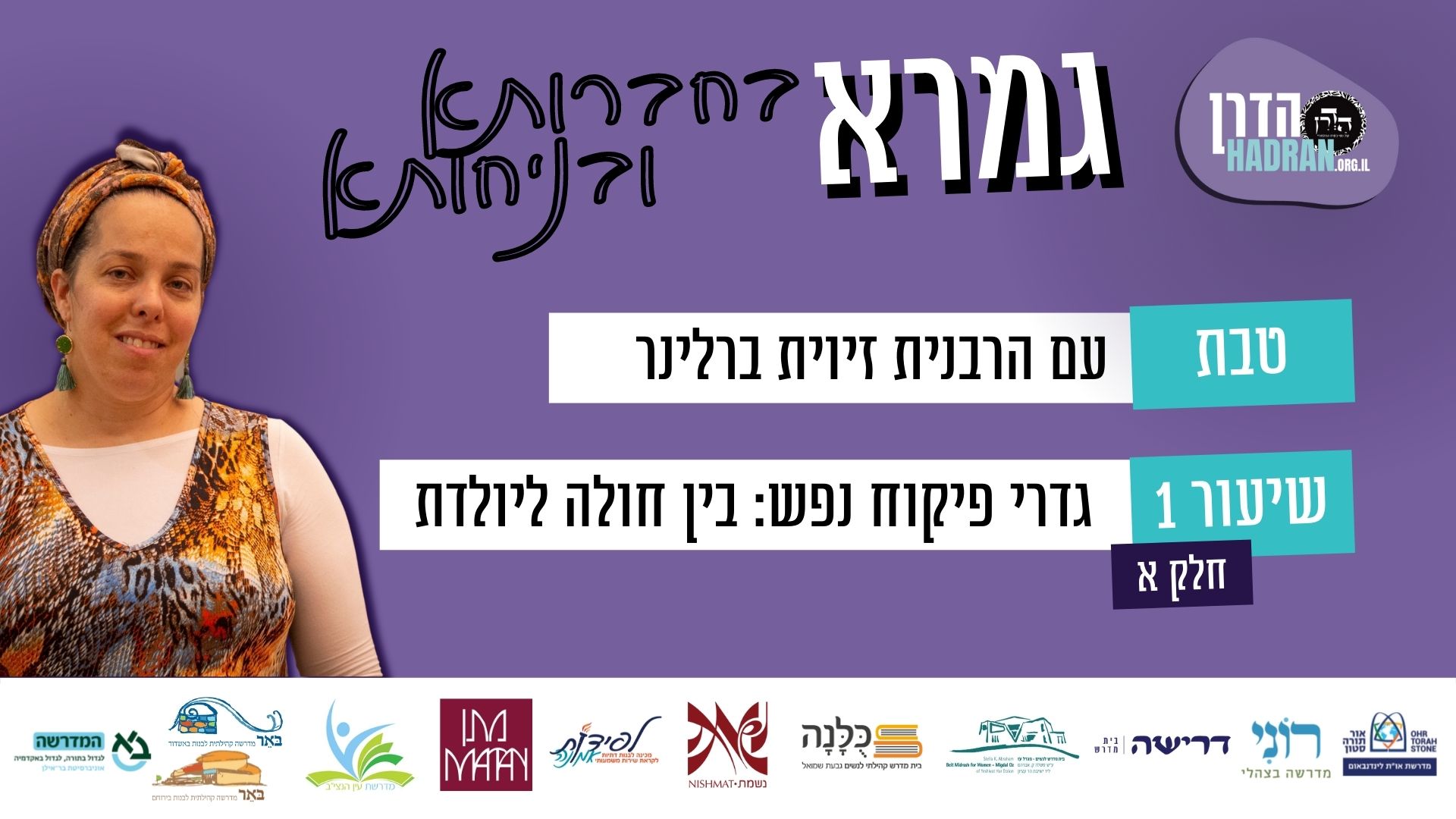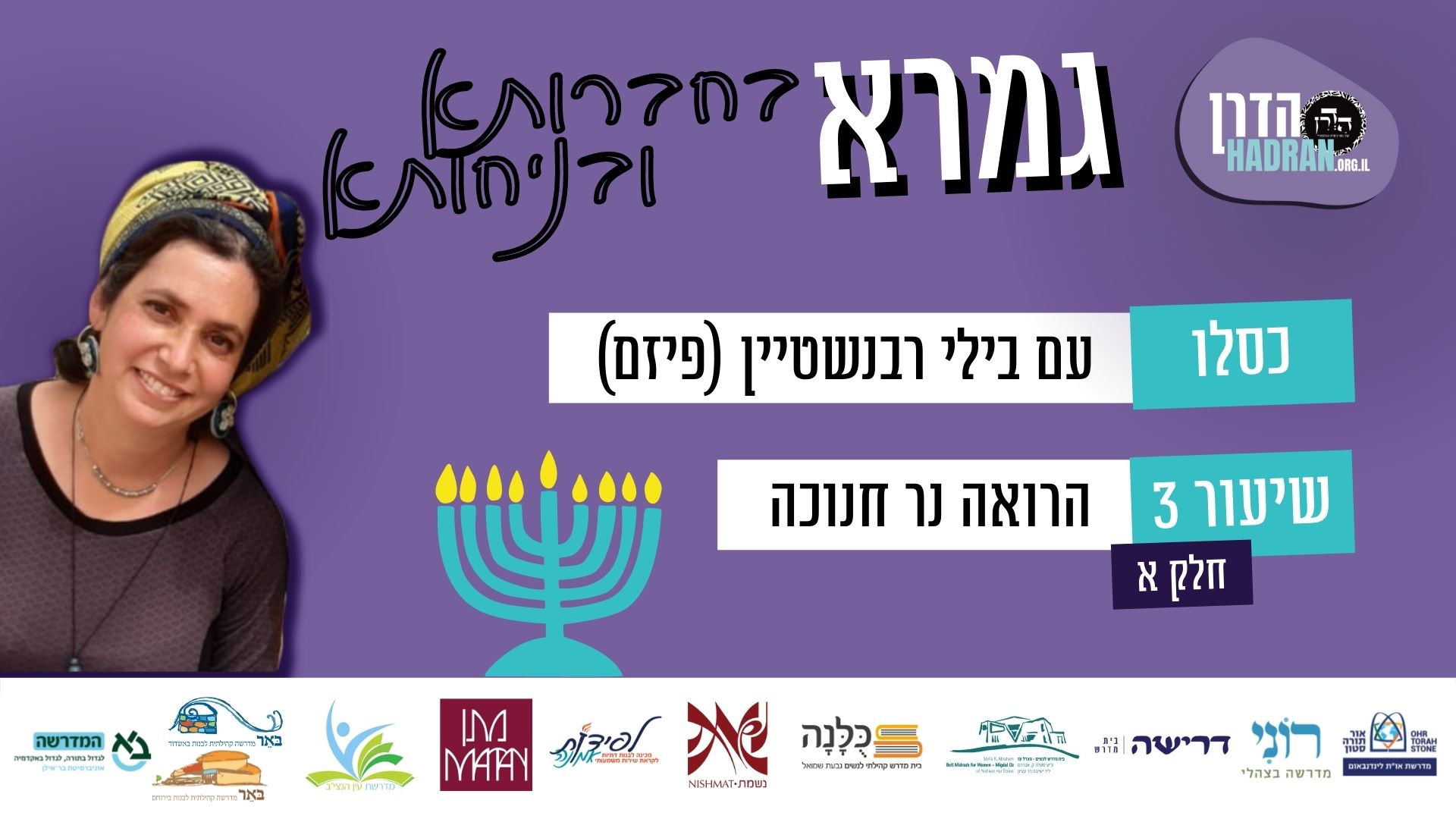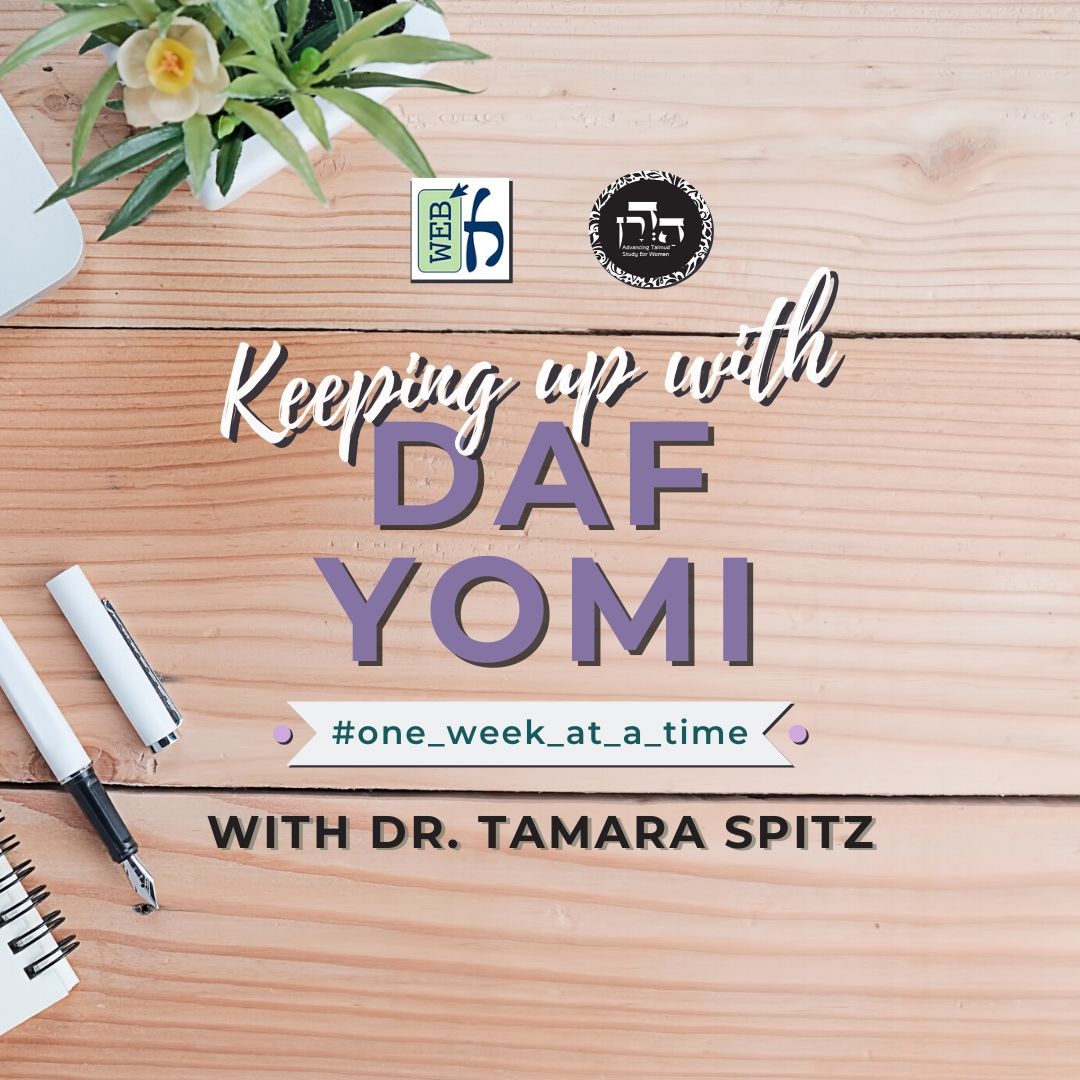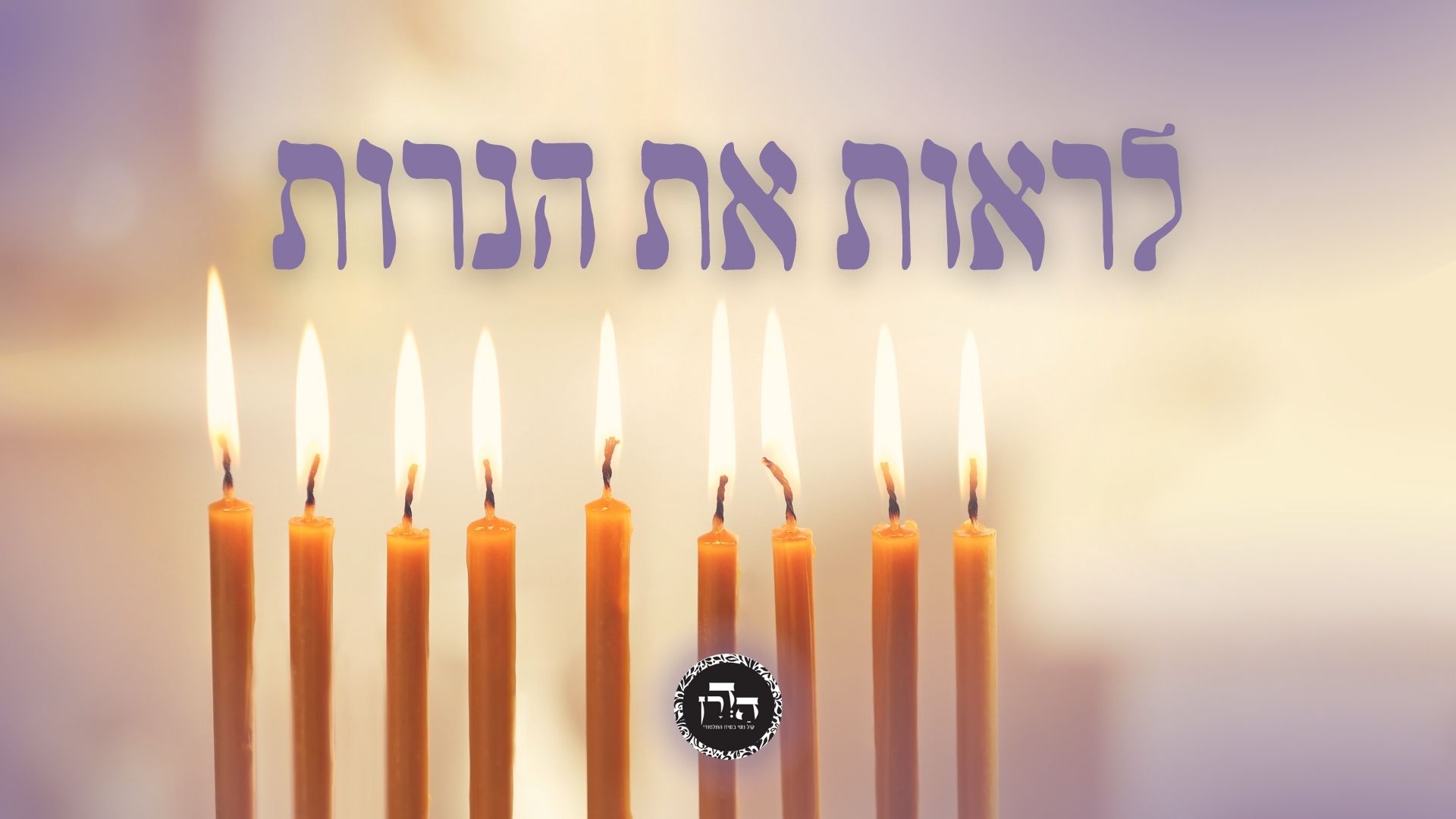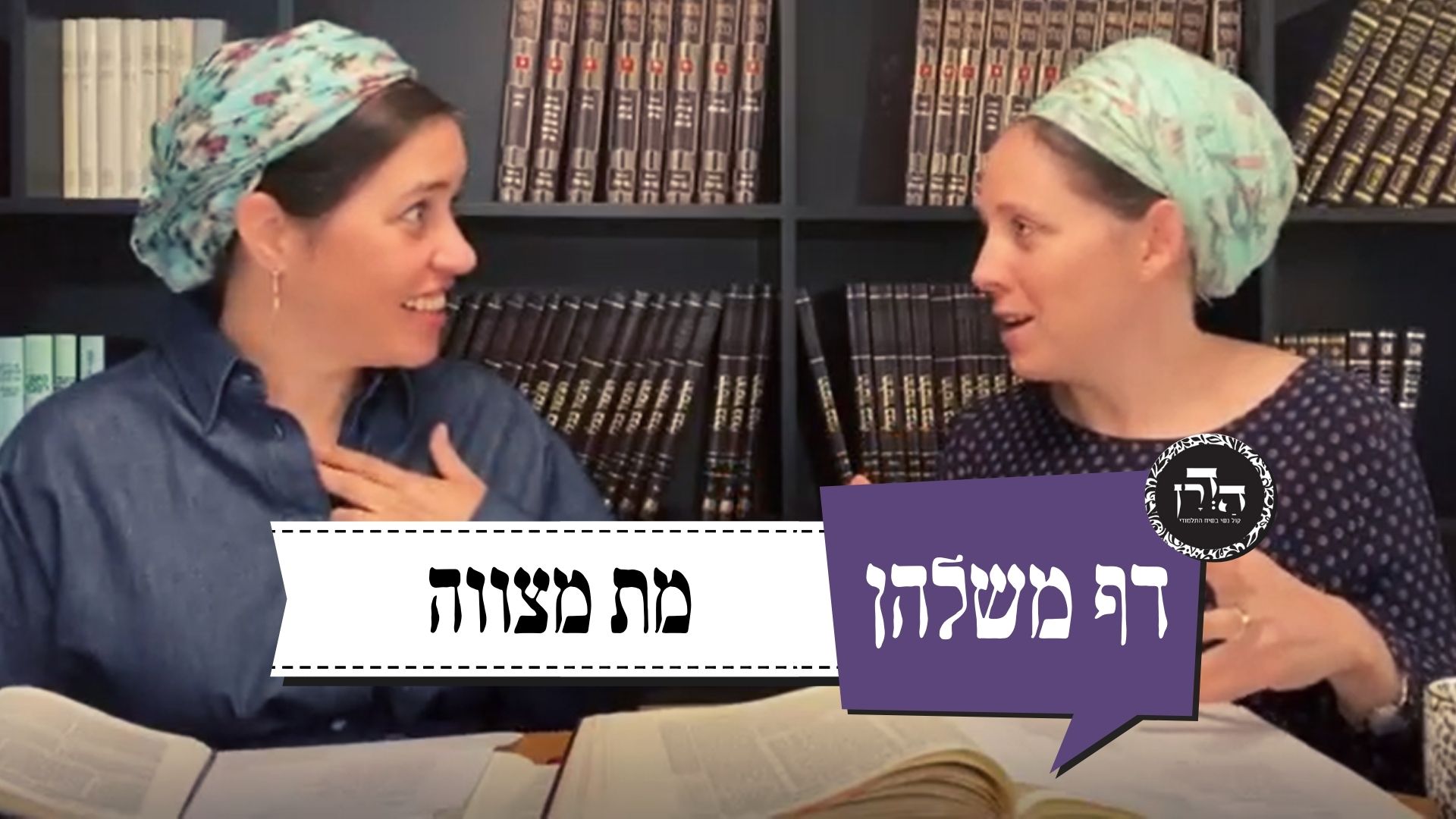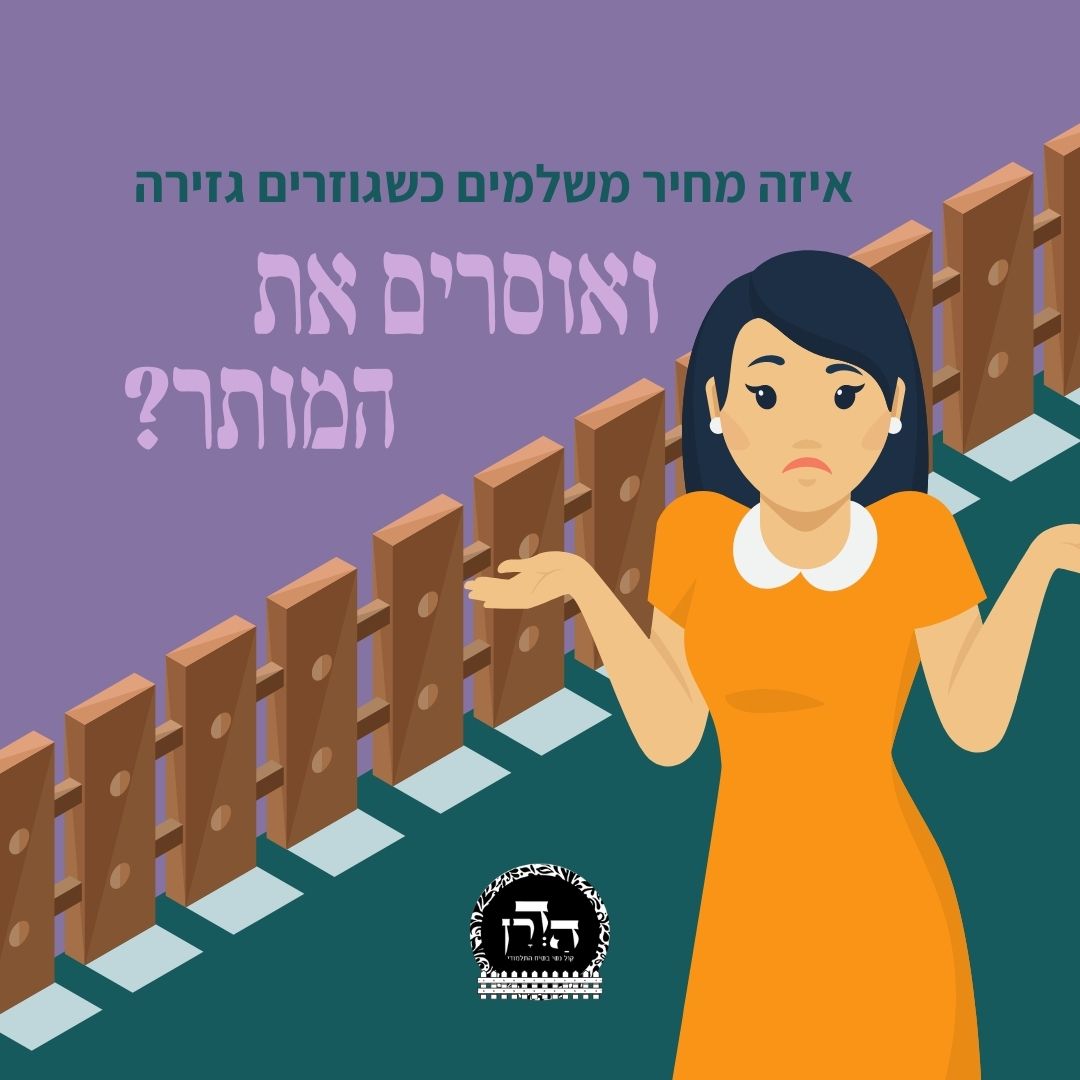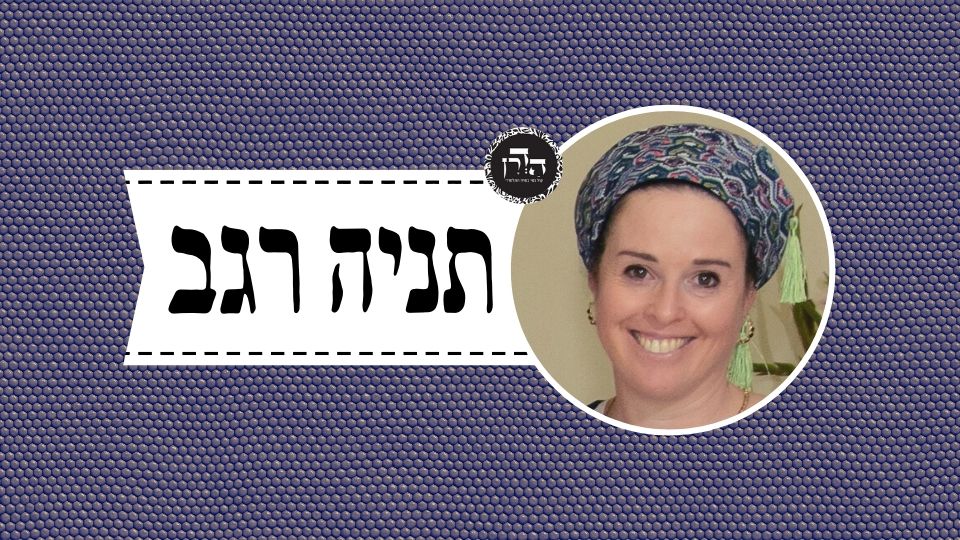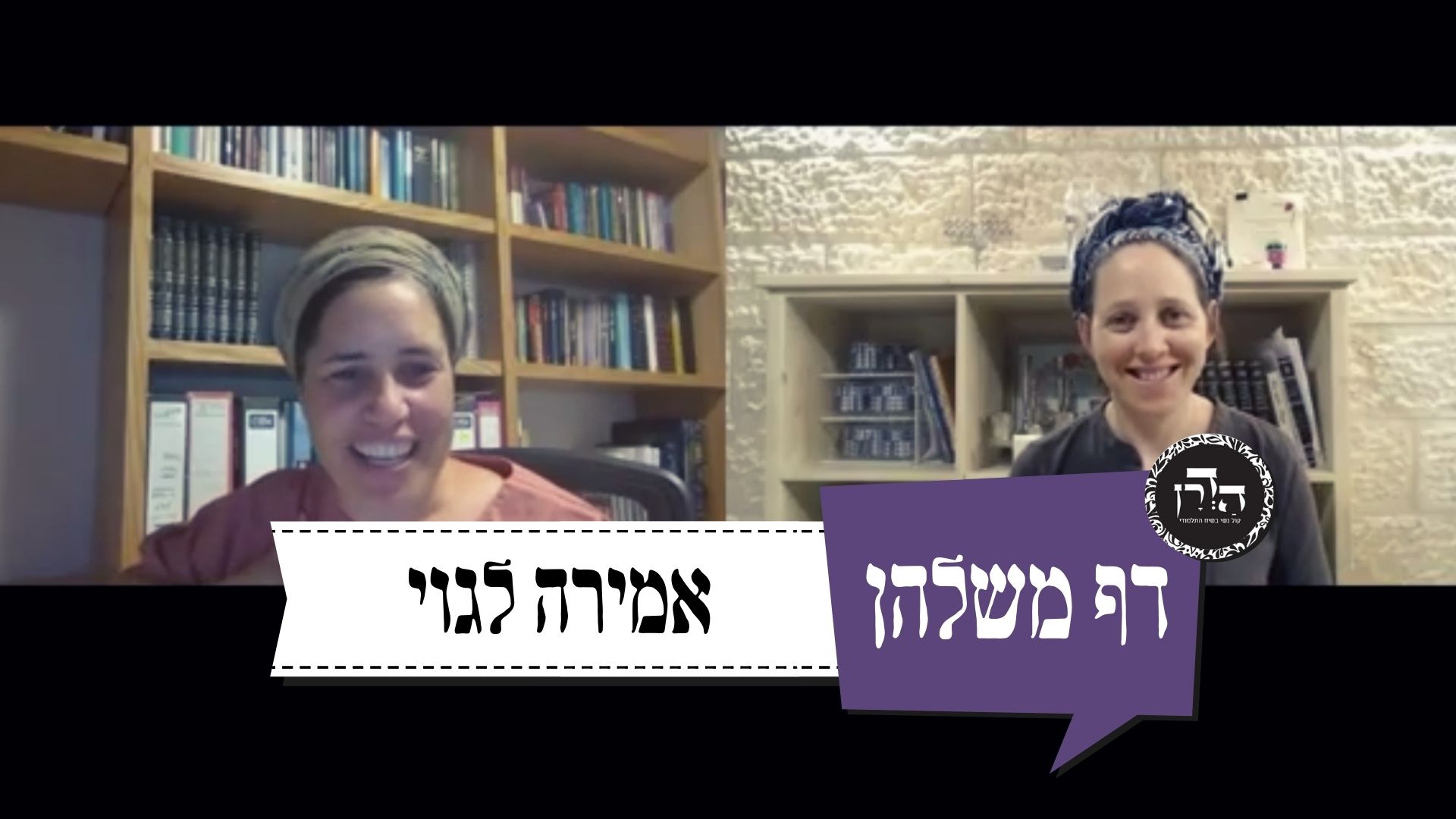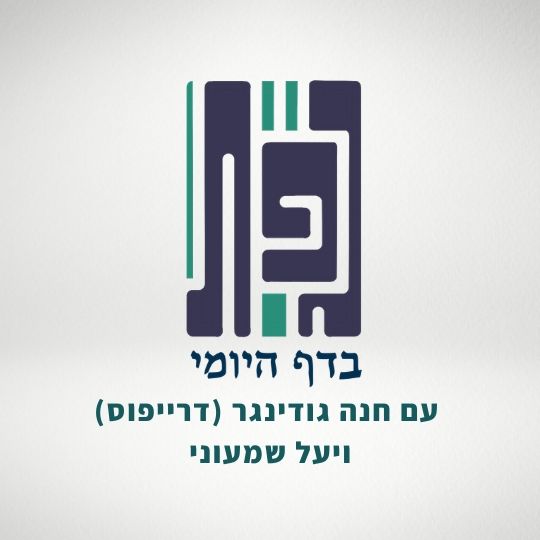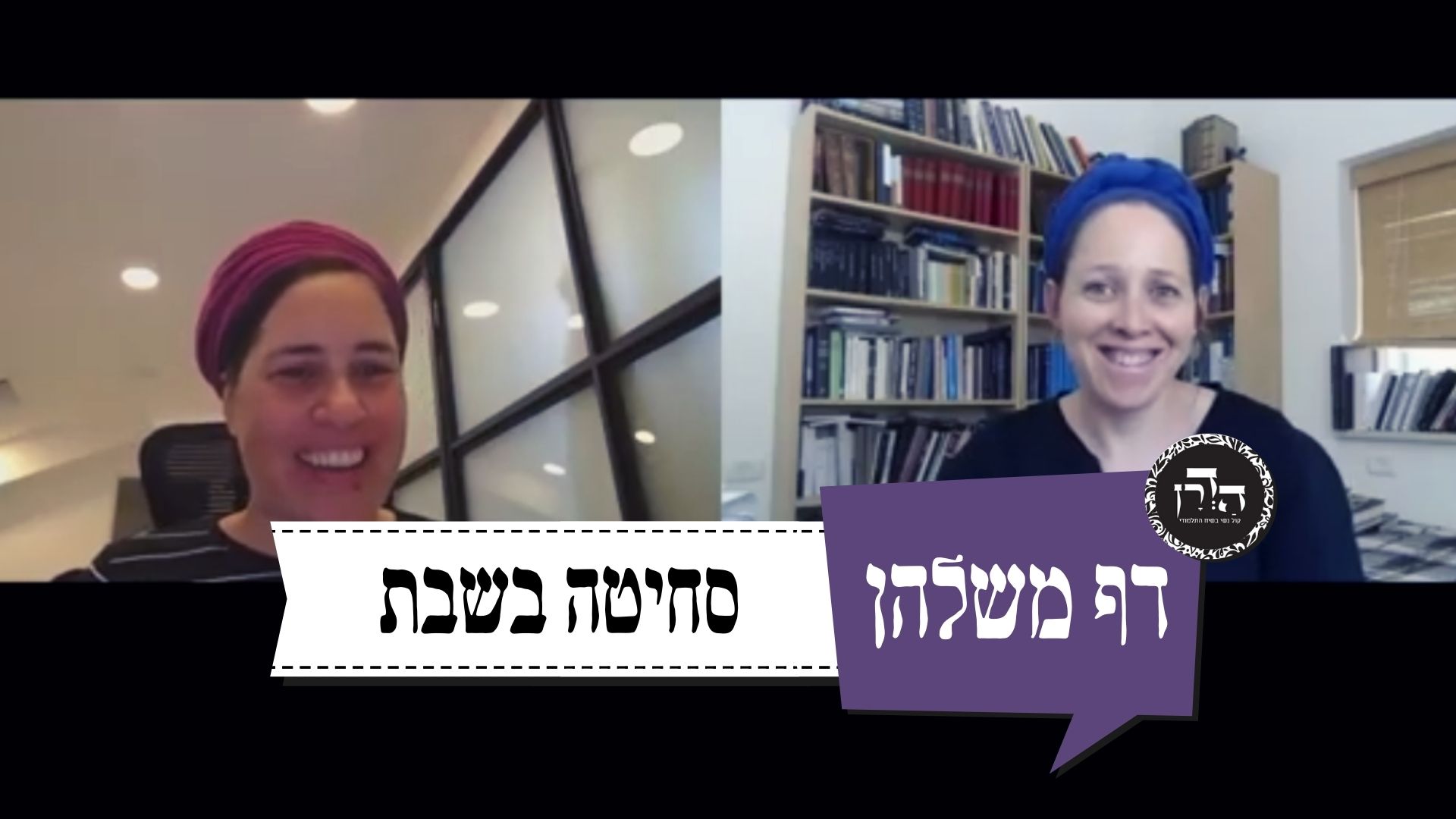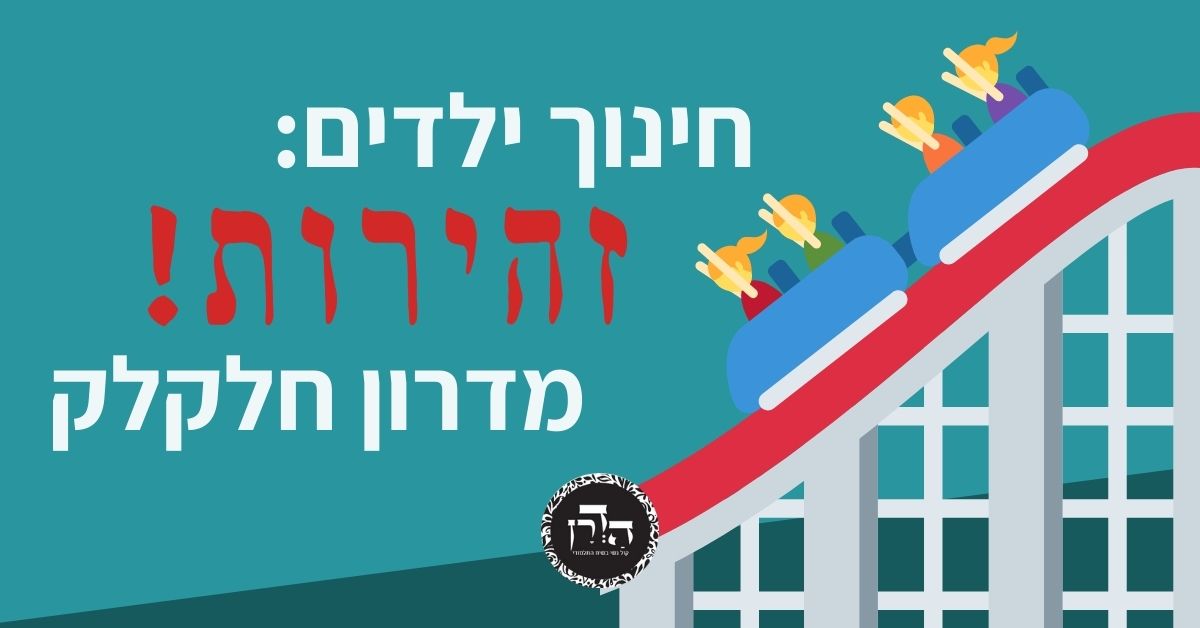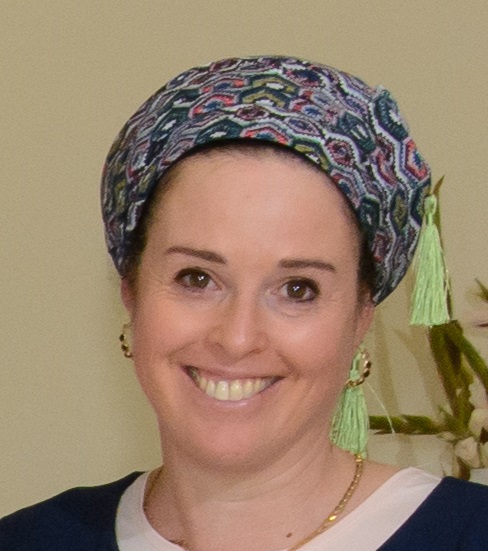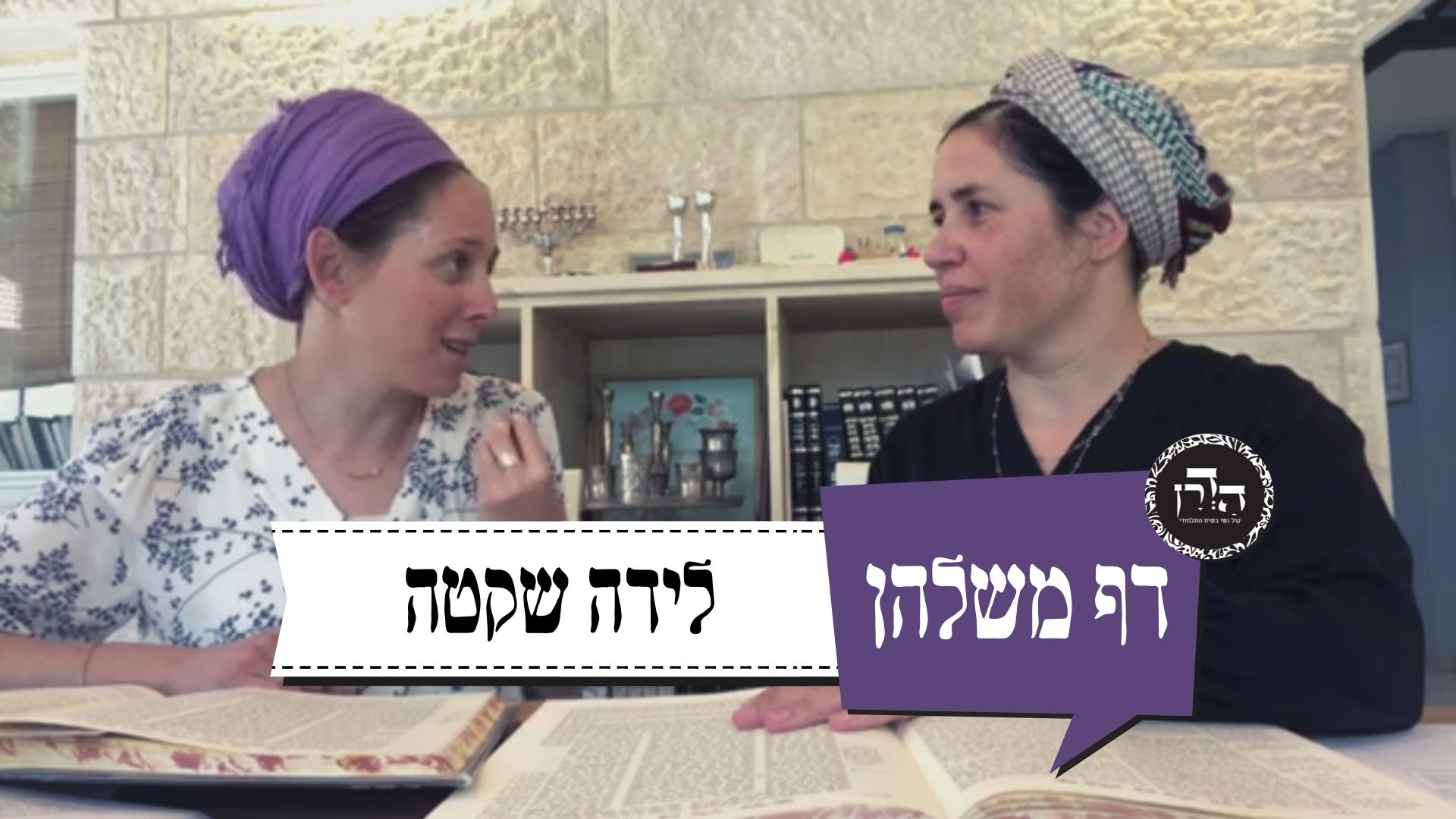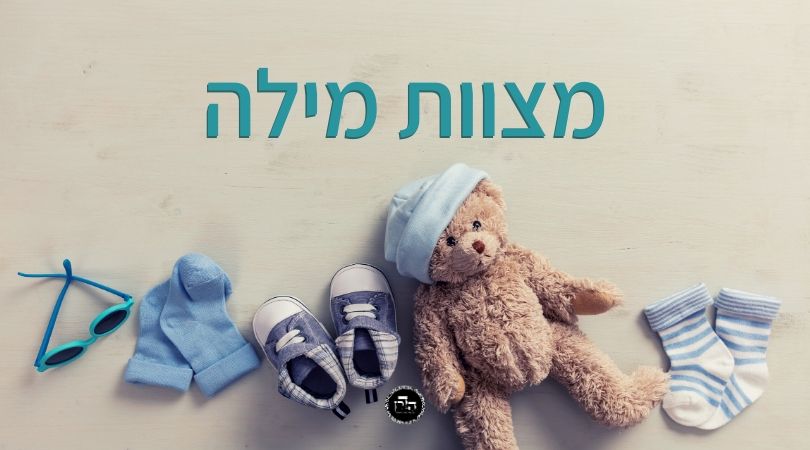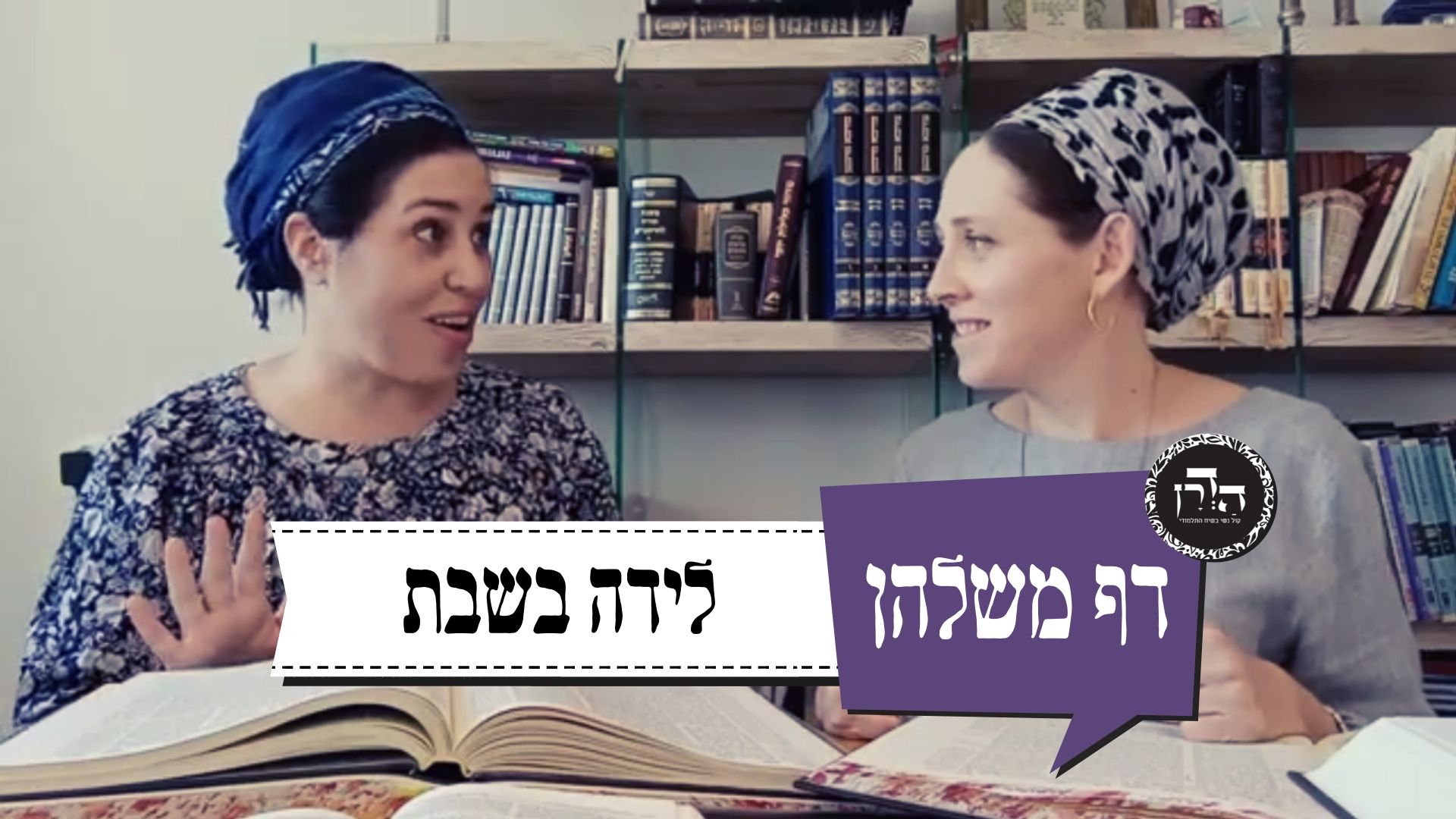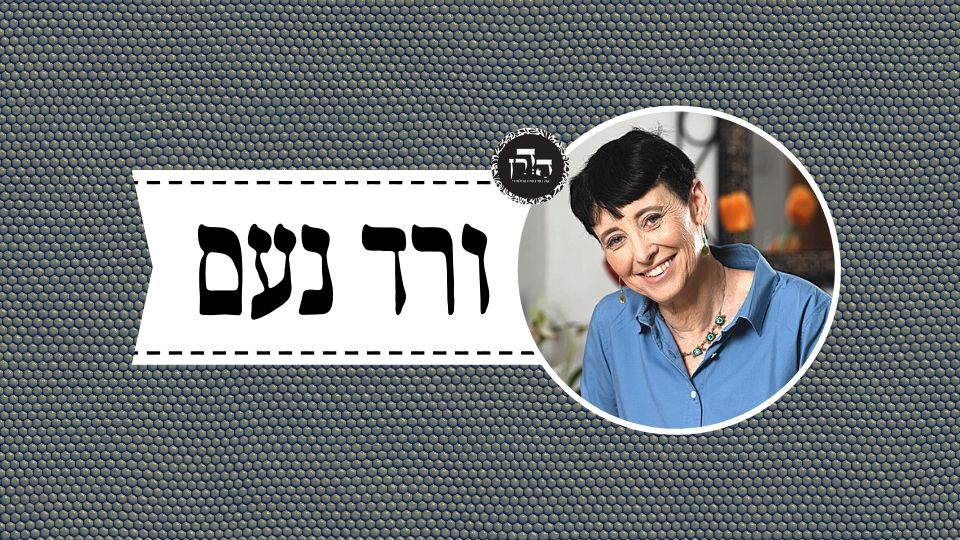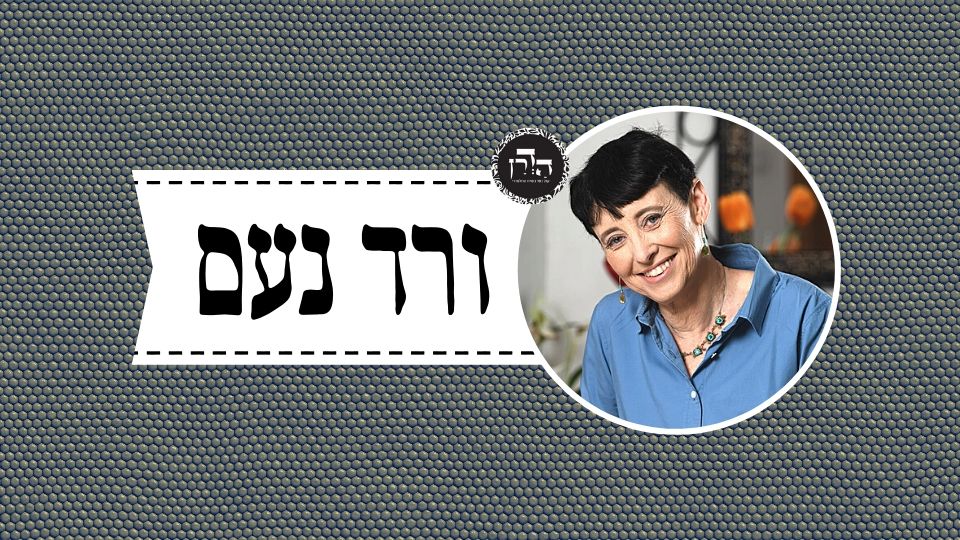שבת כב
נֵר שֶׁל חֲנוּכָּה שֶׁהִנִּיחָה לְמַעְלָה מֵעֶשְׂרִים אַמָּה — פְּסוּלָה, כְּסוּכָּה וּכְמָבוֹי. וְאָמַר רַב כָּהֲנָא, דָּרֵשׁ רַב נָתָן בַּר מִנְיוֹמֵי מִשְּׁמֵיהּ דְּרַב תַּנְחוּם: מַאי דִכְתִיב ״וְהַבּוֹר רֵק אֵין בּוֹ מָיִם״? מִמַּשְׁמַע שֶׁנֶּאֱמַר ״וְהַבּוֹר רֵק״ אֵינִי יוֹדֵעַ שֶׁאֵין בּוֹ מָיִם? אֶלָּא מַה תַּלְמוּד לוֹמַר ״אֵין בּוֹ מָיִם״ — מַיִם אֵין בּוֹ, אֲבָל נְחָשִׁים וְעַקְרַבִּים יֵשׁ בּוֹ.
A Hanukkah lamp that one placed above twenty cubits is invalid, just as a sukka whose roofing is more than twenty cubits high, and just as an alleyway whose beam, its symbolic fourth partition in order to place an eiruv, is more than twenty cubits high, are invalid. The reason is the same in all three cases: People do not usually raise their heads and see objects at a height above twenty cubits. As there is a requirement to see all of these, they are deemed invalid when placed above that height. And the Gemara cites another statement that Rav Kahana said that Rav Natan bar Manyumi taught in the name of Rav Tanḥum: What is the meaning of the verse that is written with regard to Joseph: “And they took him, and cast him into the pit; and the pit was empty, there was no water in it” (Genesis 37:24)? By inference from that which is stated: And the pit was empty, don’t I know that there was no water in it? Rather, why does the verse say: There was no water in it? The verse comes to emphasize and teach that there was no water in it, but there were snakes and scorpions in it.
אָמַר רַבָּה: נֵר חֲנוּכָּה מִצְוָה לְהַנִּיחָהּ בְּטֶפַח הַסָּמוּךְ לַפֶּתַח. וְהֵיכָא מַנַּח לֵיהּ? רַב אַחָא בְּרֵיהּ דְּרָבָא אָמַר: מִיָּמִין רַב שְׁמוּאֵל מִדִּפְתִּי אָמַר: מִשְּׂמֹאל. וְהִילְכְתָא מִשְּׂמֹאל, כְּדֵי שֶׁתְּהֵא נֵר חֲנוּכָּה מִשְּׂמֹאל וּמְזוּזָה מִיָּמִין.
Rabba said: It is a mitzva to place the Hanukkah lamp within the handbreadth adjacent to the entrance. The Gemara asks: And where, on which side, does he place it? There is a difference of opinion: Rav Aḥa, son of Rava, said: On the right side of the entrance. Rav Shmuel from Difti said: On the left. And the halakha is to place it on the left so that the Hanukkah lamp will be on the left and the mezuza on the right. One who enters the house will be surrounded by mitzvot (ge’onim).
אָמַר רַב יְהוּדָה אָמַר רַב אַסִּי אָמַר רַב: אָסוּר לְהַרְצוֹת מָעוֹת כְּנֶגֶד נֵר חֲנוּכָּה. כִּי אַמְרִיתַהּ קַמֵּיהּ דִּשְׁמוּאֵל, אָמַר לִי: וְכִי נֵר קְדוּשָּׁה יֵשׁ בָּהּ? מַתְקֵיף לַהּ רַב יוֹסֵף: וְכִי דָּם קְדוּשָּׁה יֵשׁ בּוֹ? דְּתַנְיָא ״וְשָׁפַךְ … וְכִסָּה״ — בַּמֶּה שֶׁשָּׁפַךְ יְכַסֶּה. שֶׁלֹּא יְכַסֶּנּוּ בָּרֶגֶל, שֶׁלֹּא יְהוּ מִצְוֹת בְּזוּיוֹת עָלָיו. הָכָא נָמֵי, שֶׁלֹּא יְהוּ מִצְוֹת בְּזוּיוֹת עָלָיו.
Rav Yehuda said that Rav Asi said that Rav said: It is prohibited to count money opposite a Hanukkah light. Rav Yehuda relates: When I said this halakha before Shmuel, he said to me: Does the Hanukkah light have sanctity that would prohibit one from using its light? Rav Yosef strongly objected to this question: What kind of question is that; does the blood of a slaughtered undomesticated animal or fowl have sanctity? As it was taught in a baraita that the Sages interpreted the verse: “He shall spill its blood and cover it with dust” (Leviticus 17:13): With that which he spilled, he shall cover. Just as a person spills the blood of a slaughtered animal with his hand, so too, he is obligated to cover the blood with this hand and not cover it with his foot. The reason is so that mitzvot will not be contemptible to him. Here too, one should treat the Hanukkah lights as if they were sacred and refrain from utilizing them for other purposes, so that mitzvot will not be contemptible to him.
בְּעוֹ מִינֵּיהּ מֵרַבִּי יְהוֹשֻׁעַ בֶּן לֵוִי: מַהוּ לְהִסְתַּפֵּק מִנּוֹיֵי סוּכָּה כׇּל שִׁבְעָה? אֲמַר לֵיהּ: הֲרֵי אָמְרוּ אָסוּר לְהַרְצוֹת מָעוֹת כְּנֶגֶד נֵר חֲנוּכָּה. אָמַר רַב יוֹסֵף: מָרֵיהּ דְּאַבְרָהָם! תָּלֵי תַּנְיָא בִּדְלָא תַּנְיָא. סוּכָּה תַּנְיָא, חֲנוּכָּה לָא תַּנְיָא. דְּתַנְיָא: סִכְּכָהּ כְּהִלְכָתָהּ וְעִיטְּרָהּ בִּקְרָמִים וּבִסְדִינִין הַמְצוּיָּירִין, וְתָלָה בָּהּ אֱגוֹזִים, אֲפַרְסְקִין, שְׁקֵדִים וְרִמּוֹנִים, וּפַרְכִּילֵי עֲנָבִים וַעֲטָרוֹת שֶׁל שִׁבֳּלִים, יֵינוֹת, (שֶׁל) שְׁמָנִים וּסְלָתוֹת — אָסוּר לְהִסְתַּפֵּק מֵהֶן עַד מוֹצָאֵי יוֹם טוֹב הָאַחֲרוֹן שֶׁל חַג. וְאִם הִתְנָה עֲלֵיהֶן — הַכֹּל לְפִי תְּנָאוֹ! — אֶלָּא אָמַר רַב יוֹסֵף: אֲבוּהוֹן דְּכוּלְּהוּ דָּם.
The Gemara relates that they raised a dilemma before Rabbi Yehoshua ben Levi: What is the halakha with regard to using decorations of a sukka all seven days of the festival of Sukkot? He said to them: They already said in a similar vein that it is prohibited to count money opposite the Hanukkah light, which proves that one may not use the object of a mitzva for another purpose. Rav Yosef replied in surprise: Master of Abraham! He makes that which was taught dependent upon that which was not taught. As, with regard to sukka, the prohibition to enjoy use of its decorations was taught in a baraita, and the prohibition to enjoy use of the Hanukkah lights was not taught in a baraita at all. As it was taught in a Tosefta in tractate Sukka: With regard to one who roofed the sukka in accordance with its halakhic requirements, and decorated it with colorful curtains and sheets, and hung in it ornamental nuts, peaches, almonds, and pomegranates, and grape branches [parkilei], and wreaths of stalks of grain, wines, oils, and vessels full of flour, it is prohibited to use them until the conclusion of the last day of the Festival. And, if before he hung the decorations he stipulated with regard to them that he will be permitted to use them even during the Festival, everything is according to his stipulation, and he is permitted to use them. In any case, since the prohibition to benefit from the Hanukkah light is not explicitly taught, a proof should not be cited from there to resolve the dilemma with regard to sukka decorations. Rather, Rav Yosef said: There is no need to bring a proof for the halakhot of sukka from the Hanukkah light. Rather, the paradigm of them all is blood. The verse with regard to the covering of the blood of slaughter is the original source from which the prohibition to treat mitzvot with contempt is derived.
אִיתְּמַר: רַב אָמַר אֵין מַדְלִיקִין מִנֵּר לְנֵר, וּשְׁמוּאֵל אָמַר מַדְלִיקִין. רַב אָמַר אֵין מַתִּירִין צִיצִית מִבֶּגֶד לְבֶגֶד, וּשְׁמוּאֵל אָמַר מַתִּירִין מִבֶּגֶד לְבֶגֶד. רַב אָמַר אֵין הֲלָכָה כְּרַבִּי שִׁמְעוֹן בִּגְרִירָה, וּשְׁמוּאֵל אָמַר הֲלָכָה כְּרַבִּי שִׁמְעוֹן בִּגְרִירָה.
It was stated in a dispute between amora’im that Rav said: One may not light from one Hanukkah lamp to another lamp. And Shmuel said: One may light in that manner. The Gemara cites additional disputes between Rav and Shmuel. Rav said: One may not untie ritual fringes from one garment in order to affix them to another garment. And Shmuel said: One may untie them from one garment and affix them to another garment. And Rav said: The halakha is not in accordance with the opinion of Rabbi Shimon in the case of dragging, as Rabbi Shimon permitted dragging objects on Shabbat, even if, as a result, a furrow would be dug in the ground, as it was not the person’s intent to dig that hole. Shmuel said that the halakha is in accordance with the opinion of Rabbi Shimon in the case of dragging.
אָמַר אַבָּיֵי: כֹּל מִילֵּי דְּמָר עָבֵיד כְּרַב לְבַר מֵהָנֵי תְּלָת דְּעָבֵיד כִּשְׁמוּאֵל: מַדְלִיקִין מִנֵּר לְנֵר, וּמַתִּירִין מִבֶּגֶד לְבֶגֶד, וַהֲלָכָה כְּרַבִּי שִׁמְעוֹן בִּגְרִירָה. דְּתַנְיָא, רַבִּי שִׁמְעוֹן אוֹמֵר: גּוֹרֵר אָדָם מִטָּה כִּסֵּא וְסַפְסָל — וּבִלְבַד שֶׁלֹּא יִתְכַּוֵּין לַעֲשׂוֹת חָרִיץ.
Abaye said: In all halakhic matters of the Master, Rabba, he conducted himself in accordance with the opinion of Rav, except these three where he conducted himself in accordance with the opinion of Shmuel. He ruled: One may light from one Hanukkah lamp to another lamp, and one may untie ritual fringes from garment to garment, and the halakha is in accordance with the opinion of Rabbi Shimon in the case of dragging. As it was taught in a baraita, Rabbi Shimon says: A person may drag a bed, chair, and bench on the ground, as long as he does not intend to make a furrow in the ground. Even if a furrow is formed inadvertently, one need not be concerned.
יָתֵיב הָהוּא מֵרַבָּנַן קַמֵּיהּ דְּרַב אַדָּא בַּר אַהֲבָה וְיָתֵיב וְקָאָמַר: טַעְמָא דְרַב מִשּׁוּם בִּיזּוּי מִצְוָה. אֲמַר לְהוּ: לָא תְּצִיתוּ לֵיהּ, טַעְמֵיהּ דְּרַב מִשּׁוּם דְּקָא מַכְחִישׁ מִצְוָה. מַאי בֵּינַיְיהוּ? אִיכָּא בֵּינַיְיהוּ דְּקָא מַדְלֵיק מִשְּׁרָגָא לִשְׁרָגָא: מַאן דְּאָמַר מִשּׁוּם בִּיזּוּי מִצְוָה — מִשְּׁרָגָא לִשְׁרָגָא מַדְלֵיק. מַאן דְּאָמַר מִשּׁוּם אַכְחוֹשֵׁי מִצְוָה — מִשְּׁרָגָא לִשְׁרָגָא נָמֵי אָסוּר.
One of the Sages sat before Rav Adda bar Ahava, and he sat and said: The reason for the opinion of Rav, who prohibited lighting from one Hanukkah lamp to another, is due to contempt for the mitzva. Using the light for a purpose other than illumination demeans the mitzva of Hanukkah lights. Rav Adda bar Ahava said to his students: Do not listen to him, as the reason for Rav’s opinion is due to the fact that he thereby weakens the mitzva. By lighting from lamp to lamp he slightly diminishes the oil and wick designated for the purpose of the mitzva. The Gemara asks: What is the practical difference between them? The Gemara answers: The practical difference between them is in a case where he lights directly from lamp to lamp, without using a wood chip or another lamp to light the second lamp. According to the one who said that Rav’s reason is due to contempt for the mitzva, directly from lamp to lamp he may even light ab initio, as, by lighting another Hanukkah lamp, he does not thereby demean the sanctity of the mitzva because the second lamp is also a mitzva. According to the one who said that Rav’s reason is because he weakens the mitzva, lighting directly from lamp to lamp is also prohibited, as ultimately, he utilizes the mitzva lamp for a task that he could have accomplished with a non-sacred lamp.
מֵתִיב רַב אַוְיָא: סֶלַע שֶׁל
Rav Avya raised an objection from that which was taught in a Tosefta: A sela of
מַעֲשֵׂר שֵׁנִי אֵין שׁוֹקְלִין כְּנֶגְדּוֹ דִּנָרֵי זָהָב, וַאֲפִילּוּ לְחַלֵּל עָלָיו מַעֲשֵׂר שֵׁנִי אַחֵר. אִי אָמְרַתְּ בִּשְׁלָמָא כִּי פְּלִיגִי רַב וּשְׁמוּאֵל מִנֵּר לְנֵר אֲבָל בְּקִינְסָא אָסַר שְׁמוּאֵל — הָא לָא תִּהְוֵי תְּיוּבְתָּא. אֶלָּא אִי אָמְרַתְּ בְּקִינְסָא נָמֵי שָׁרֵי — הָא תִּהְוֵי תְּיוּבְתָּא! אָמַר רַבָּה: גְּזֵירָה שֶׁמָּא לֹא יְכַוֵּין מִשְׁקְלוֹתָיו וְקָא מַפֵּיק לְהוּ לְחוּלִּין.
the second tithe, one may not weigh gold dinars with it in order to determine their precise weight. And doing so is prohibited even if he is weighing the coin in order to redeem other second-tithe produce with it, as one may not derive benefit from tithe money. The Gemara discusses this matter: Granted, if you say that when Rav and Shmuel disagree it is with regard to a case when one lights from lamp to lamp, but with a wood chip, Shmuel prohibits lighting, this will not be a conclusive refutation of Shmuel’s opinion. But if you say that he permits lighting from lamp to lamp with a wood chip as well, this would be a conclusive refutation of his opinion, as the Sages did not permit use of and benefit from a sacred object even for the purpose of a similar sacred need. Rabba said: This is not difficult, as in the case of weighing tithe money the Sages prohibited doing so as a decree lest the weights not be precisely equal. One will discover that the weight of the gold dinars is not equal to the weight of the sela that he used to weigh them, and he will reconsider and render them unsanctified, i.e., they will maintain their original, non-sacred status. In that case, he will have used the tithe money for an unsanctified purpose. However, when one lights even a wood chip for the purpose of Hanukkah lights, it is clear that it is for the purpose of performing a mitzva, and there is no reason to issue a decree.
מֵתִיב רַב שֵׁשֶׁת: ״מִחוּץ לְפָרוֹכֶת הָעֵדוּת יַעֲרוֹךְ״, וְכִי לְאוֹרָהּ הוּא צָרִיךְ? וַהֲלֹא כׇּל אַרְבָּעִים שָׁנָה שֶׁהָלְכוּ בְנֵי יִשְׂרָאֵל בַּמִּדְבָּר לָא הָלְכוּ אֶלָּא לְאוֹרוֹ! אֶלָּא עֵדוּת הִיא לְבָאֵי עוֹלָם שֶׁהַשְּׁכִינָה שׁוֹרָה בְּיִשְׂרָאֵל. מַאי עֵדוּת? אָמַר רַב: זוֹ נֵר מַעֲרָבִי שֶׁנּוֹתֵן בָּהּ שֶׁמֶן כְּמִדַּת חַבְרוֹתֶיהָ, וּמִמֶּנָּה הָיָה מַדְלִיק וּבָהּ הָיָה מְסַיֵּים. וְהָא הָכָא כֵּיוָן דִּקְבִיעִי נֵרוֹת, לָא סַגְיָא דְּלָא מִשְׁקָל וְאַדְלוֹקֵי. קַשְׁיָא בֵּין לְמַאן דְּאָמַר מִשּׁוּם בִּזּוּי מִצְוָה, וּבֵין לְמַאן דְּאָמַר מִשּׁוּם אַכְחוֹשֵׁי מִצְוָה!
Rav Sheshet raised an objection from that which was taught in a baraita. With regard to the Temple candelabrum, it is stated: “Outside the veil of the testimony, in the Tent of Meeting, shall Aaron order it from evening to morning before the Lord continually; it shall be a statute forever throughout your generations” (Leviticus 24:3). It must be understood: And does God require its light for illumination at night? Didn’t the children of Israel, all forty years that they walked in the wilderness, walk exclusively by His light, the pillar of fire? Rather, the lighting of the candelabrum is testimony to mankind that the Divine Presence rests among Israel. The Gemara asks: What is this testimony? Rav said: That is the westernmost lamp in the candelabrum in which the measure of oil placed was the same measure of oil as was placed in the other lamps, and nevertheless he would light the others from it each day and with it he would conclude, i.e., the westernmost lamp would continue burning throughout the day after all the others were extinguished. The rest of the lamps burned only at night, and each night he would relight the rest of the lamps from the westernmost lamp. But isn’t it true that here, in the Temple, since the lamps were fixed in the candelabrum, it was impossible to light directly from lamp to lamp? There was no alternative to taking a wood chip and lighting the rest of the lamps from the westernmost lamp. Consequently, it is difficult both according to the one who said that one may not light from lamp to lamp due to contempt for the mitzva and according to the one who said that one may not light from lamp to lamp due to weakening the mitzva.
תַּרְגְּמַהּ רַב פָּפָּא בִּפְתִילוֹת אֲרוּכּוֹת. סוֹף סוֹף, לְמַאן דְּאָמַר מִשּׁוּם אַכְחוֹשֵׁי מִצְוָה קַשְׁיָא! — קַשְׁיָא.
Rav Pappa explained that it need not necessarily be understood that way. Rather, there were long wicks in the candelabrum, which made it possible to reach and light directly from one lamp to another. However, ultimately, according to the one who said that one may not light from lamp to lamp due to weakening the mitzva, it is difficult. The Gemara concludes: Indeed, the question remains difficult.
מַאי הָוֵי עֲלַהּ? אָמַר רַב הוּנָא בְּרֵיהּ דְּרַב יְהוֹשֻׁעַ: חָזֵינַן, אִי הַדְלָקָה עוֹשָׂה מִצְוָה — מַדְלִיקִין מִנֵּר לְנֵר. וְאִי הַנָּחָה עוֹשָׂה מִצְוָה — אֵין מַדְלִיקִין מִנֵּר לְנֵר.
In summary, the Gemara asks: What is the halakhic conclusion reached about this matter in terms of lighting from lamp to lamp? Rav Huna, son of Rabbi Yehoshua, said: We see; if the halakha is in accordance with the opinion of the one who said that kindling the Hanukkah light accomplishes the mitzva and the rest is secondary, one may light from lamp to lamp. The lighting itself is the essence of the mitzva of Hanukkah lights. And if the halakha is in accordance with the opinion of the one who said that placing the lit lamp in a suitable place accomplishes the mitzva, then one may not light from lamp to lamp. According to that opinion, lighting is simply an auxiliary action that facilitates the fulfillment of the essence of the mitzva, which is placing the lamp in a place where its light can be seen by the public. Since lighting is merely a preparatory action, one may not demean the mitzva by lighting from lamp to lamp.
דְּאִיבַּעְיָא לְהוּ: הַדְלָקָה עוֹשָׂה מִצְוָה, אוֹ הַנָּחָה עוֹשָׂה מִצְוָה?
After the issue of whether lighting accomplishes the mitzva or placing accomplishes the mitzva was raised in the context of the previous discussion, the Gemara cites the discussion in its entirety. As a dilemma was raised before the Sages: In the case of the Hanukkah light, does lighting accomplish the mitzva, and placing the lit lamp is simply a continuation of that action, or does placing the kindled lamp accomplish the mitzva, and lighting is simply a practical necessity that facilitates placing the lamp?
תָּא שְׁמַע, דְּאָמַר רָבָא: הָיָה תָּפוּשׂ נֵר חֲנוּכָּה וְעוֹמֵד — לֹא עָשָׂה וְלֹא כְלוּם. שְׁמַע מִינַּהּ: הַנָּחָה עוֹשָׂה מִצְוָה! הָתָם, הָרוֹאֶה אוֹמֵר לְצוֹרְכּוֹ הוּא דְּנָקֵיט לַהּ.
The Gemara suggests: Come and hear a solution to this dilemma from that which Rava said: One who was holding a burning Hanukkah lamp in his hand and standing, he did nothing in terms of fulfilling the mitzva. Conclude from this that placing accomplishes the mitzva. Until he sets the lamp down in its appropriate place, he did not fulfill the mitzva. The Gemara rejects this: There, they said that he did not fulfill his obligation for a different reason. One who sees it will say that he is not holding the lamp in order to fulfill the mitzva, but he is holding it for his own needs. Since holding the lamp can mislead onlookers, he does not fulfill the mitzva in that manner.
תָּא שְׁמַע, דְּאָמַר רָבָא: הִדְלִיקָהּ בִּפְנִים וְהוֹצִיאָהּ — לֹא עָשָׂה כְּלוּם. אִי אָמְרַתְּ בִּשְׁלָמָא הַדְלָקָה עוֹשָׂה מִצְוָה — הַדְלָקָה בִּמְקוֹמוֹ בָּעֵינַן, מִשּׁוּם הָכִי לֹא עָשָׂה כְּלוּם. אֶלָּא אִי אָמְרַתְּ הַנָּחָה עוֹשָׂה מִצְוָה, אַמַּאי לֹא עָשָׂה וְלֹא כְלוּם? הָתָם נָמֵי: הָרוֹאֶה הוּא אוֹמֵר לְצוֹרְכּוֹ הוּא דְּאַדְלְקַהּ.
Come and hear another resolution for this dilemma from that which Rava said: One who lights the Hanukkah lamp inside the house and then takes it out and places it at the entrance to his house did nothing in terms of fulfilling the mitzva. Granted, if you say that lighting accomplishes the mitzva it is understandable, as lighting in its place is required. That is why Rava ruled that he did nothing in terms of fulfilling the mitzva. However, if you say that placing accomplishes the mitzva, why did Rava rule that he did nothing? Didn’t he set it down in its appropriate place? The Gemara answers: There too, even though he subsequently brought it outside, one who sees him lighting inside will say to himself that he is lighting the lamp for his own needs and not in fulfillment of the mitzva.
תָּא שְׁמַע דְּאָמַר רַבִּי יְהוֹשֻׁעַ בֶּן לֵוִי:
Come and hear another resolution from that which Rabbi Yehoshua ben Levi said:

